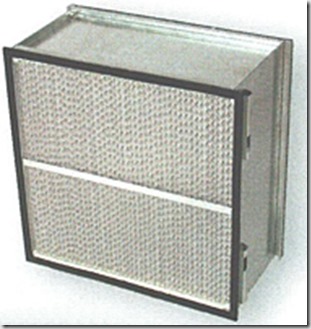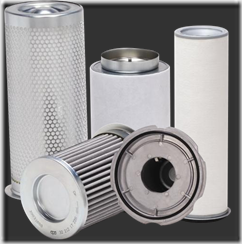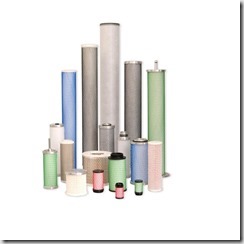We spend a lot of time discussing compression & drying technology but the filtration in your compressed air system is equally important. Filtration on compressed air systems is vitally important from the compressor intake on the front end to final filtration before use applications.
We’ve previously discussed just how much contaminant is in the ambient air from fine particles to water vapor. At the intake of the compressor, we can’t expect to filter out water vapor but we can certainly remove particulate contamination which could easily damage the internal components on our compressor. The inlet filter to your compressor is critical regardless of the type of compressor. Note that some types are more critical than others. A centrifugal compressor, with it’s tight tolerances would be the most important but even a reciprocating compressor needs to keep contaminant out.
Contaminants can be found from something as simple as pollen from the surrounding area or as complex as particles generated within your manufacturing process or a nearby plant.
A typical inlet filter element for a centrifugal compressor will be 2 micron with an efficiency of 99% or better which eliminates the majority of airborne particulate. In a normal installation this level of filtration will be more than adequate.
I’ll also note here that in rare circumstances there can be chemical vapor intrusion into the compressor. These chemical gas vapors can come from within your manufacturing facility (chemical, Pulp & Paper). It is best practice to place the compressor intake filter away from these potential contaminants as they can lead to premature erosion of key internal components. In the event the intake cannot be relocated there are options for catalyst type intake filters that can remove the chemical vapors. This is a highly expensive route to correcting this issue.
The oil filter on your compressor is another key item. Few items can destroy a compressor quicker than contaminated oil. Always use a high quality OEM oil filter! Even on compressors we service with non-OEM parts we stand certain these components are manufactured to the OEM or higher specifications. With something as inexpensive as an oil filter, never take a chance!
Centrifugal compressors will normally have a vacuum drawn on the oil reservoir to assure any oil vapor is pulled back into the oil system and not be allowed to bypass oil seals and migrate into the air system. The vacuum system regard less of electric or venturi type will have a small filter to prevent oil vapor from entering the atmospheric air near the compressor. Make sure these are kept clean and in good working order.
Depending on the type of air dryer used in conjunction with the compressor there may be pre-filter elements prior to the air entering the dryer. This is especially important when using desiccant type dryers. For desiccant dryers this pre-filter element will be a coalescing type element to remove any liquid water prior to the air reaching the desiccant bed in addition to any oil carryover. A normal rating for this type of pre-filter would be at minimum an oil pass rate of 0.0014 ppm by weight when subject to an inlet condition of 50 ppm by weight. In refrigerated dryer applications this could be a particulate only type element to prevent any contaminants generated within the compressor from passing further downstream. *A coalescing type element will actually coalesce both water/oil from the airstream in addition to capturing particulates.
With the use of a refrigerated dryer, this will likely be the last filter element in the system prior to use. The exception here would be a point of use filter typically combined with a regulator and potentially an lubricator. These units are often called FRLs. First since we deal in oil free compressed air there is not normally a lubricator although if all of the air is generated from an oil free compressor and used everywhere in the plant there could be applications that require lubrication.
Unless there is a concern of contamination entering the compressed air system from within the plant air piping, I never recommend the installation of filters at the point of use. Typical FRLs filters are not very efficient and typically do cause a high pressure drop.
If the plant uses a desiccant dryer then there will normally be one additional filter downstream of the desiccant dryer. This will be a particulate element to capture any desiccant fines or dust that are pulled downstream. This can occur when the desiccant begins to fail, losing crush strength or from attrition. A typical rating for this type of after-filter would be 0.9 micron at 99.99% efficiency.
There are other types of filters that will be found in lubricated compressor applications and of course specialty applications, such as breathing air, can have a myriad of additional filtration installed but what has been discussed would be a normal compressed air system.
If in doubt the best solution is to contact your local compressed air specialist and schedule an on site review for your specific plant requirements.
As always, if I can be of any assistance please feel free to contact me to discuss.






